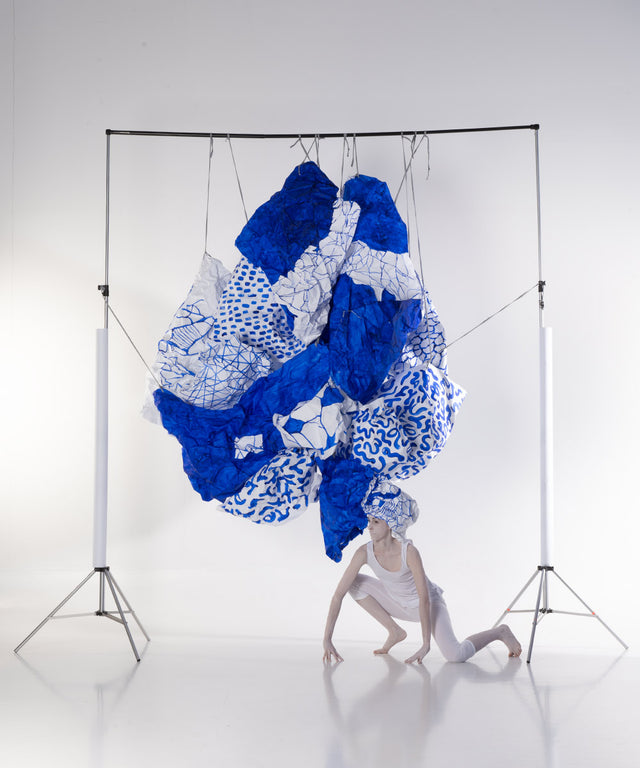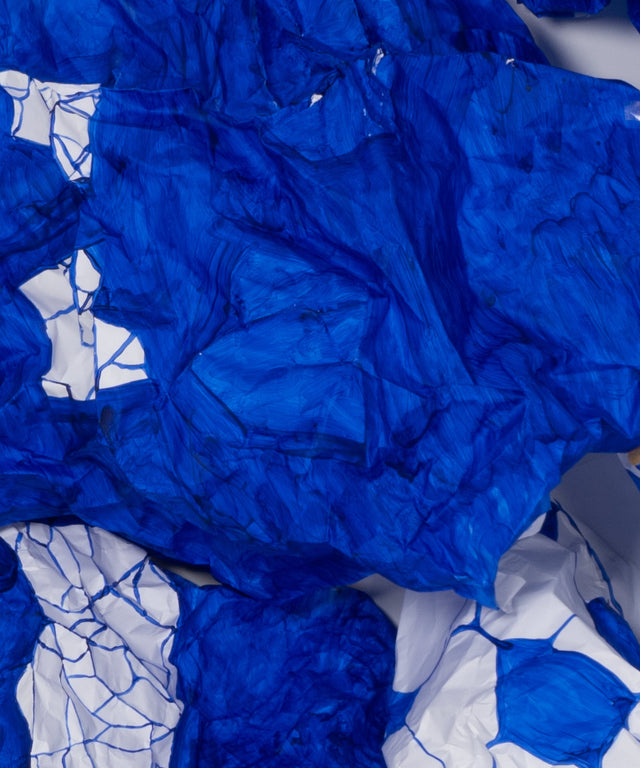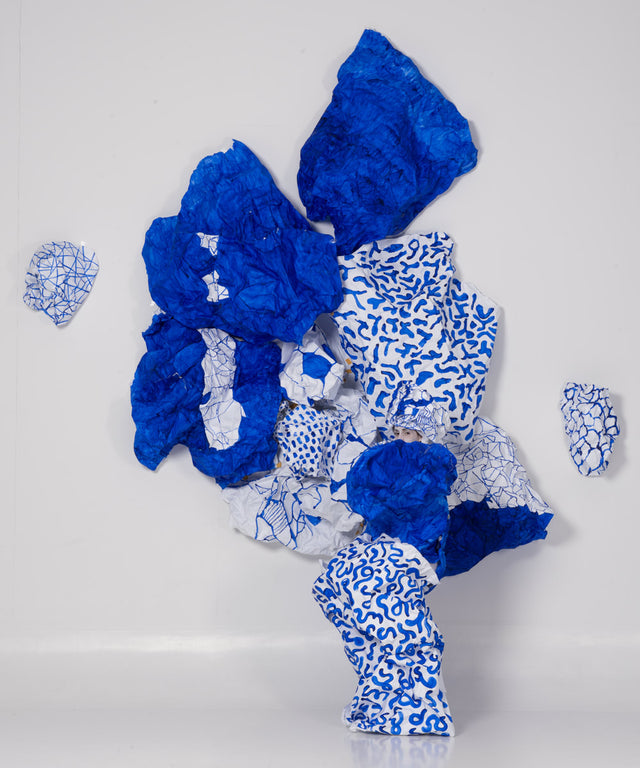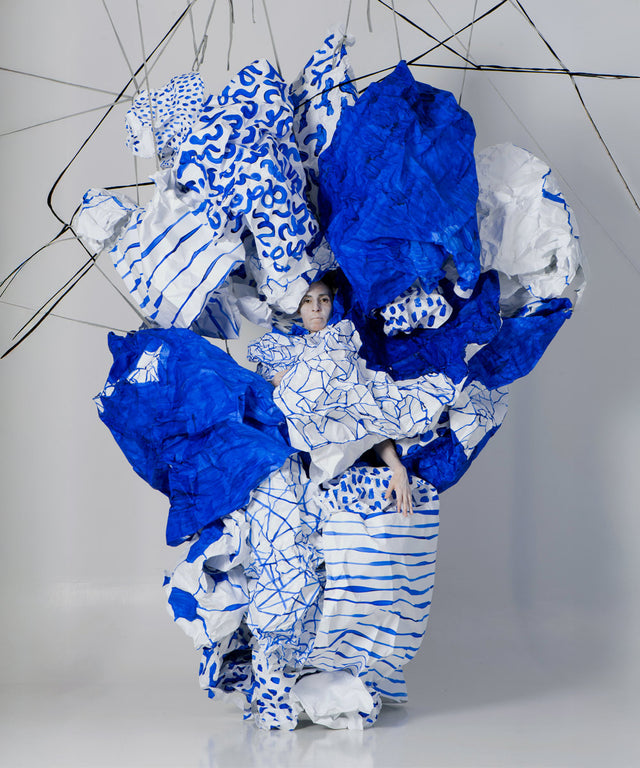The Big Blue
This audiovisual project was conceived as an exercise in the fusion of disciplines—painting, sculpture, Butoh dance, and theater. Yet its aim is not to simply combine languages, but to blur the boundaries between them.
Filmed in a studio, the scene is reduced to two elements: a woman (performing Butoh dance) and fragments of blue-painted paper. This visual economy does not seek simplification, but rather to intensify optical experience. The choreography becomes a perceptual trap: we can’t tell whether the figure is born from the blue material or simply dissolves into it. Blue is not just a color; it becomes space, body, and dissolution.
The piece is a conscious exploration of figure-ground confusion. Butoh—also known as the "dance of darkness"—is a form of Japanese contemporary dance that emerged in the late 1950s. It is highly expressive and often unsettling, exploring deep themes such as metamorphosis, the cycles of life and death, and humanity’s connection to nature. Known for its erratic and grotesque movements, Butoh seeks to liberate the body from knowledge and technique to access the unconscious. The dancing woman and the blue shapes form a living sculpture—between the fleshly and the stone-like, between emotion and entropy. What appears, always appears only to fade.
The color blue—evocative of the infinite, of mystery, of dilated time—becomes the true protagonist. The body resists entropy, and this blue seems to act as a glue attempting to shape chaos with minimal cadence, with a fragile sense of order.
There is no narrative, no message. Only transition. A figure emerges, blurs, and vanishes. A gesture becomes an optical illusion. A body that insists on not being a body. What we witness is a fantasy decomposing as it is performed—something we long to see, yet that never fully allows itself to be captured.
INTO THE BIG BLUE is not meant to be a spectacle. It is rather a visual drift, where forms hesitate, boundaries erode, and the body becomes landscape. Its power lies in that ambiguity. The sculpture exists because a memory archive exists—but its destiny is to disappear.






